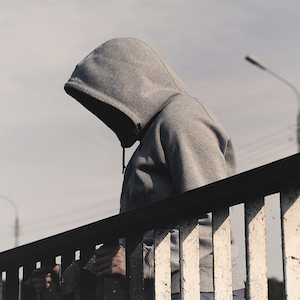Burnout phenomenon in Saudi dermatology residents: a national assessment of prevalence and contributing factors

Accepted: 8 February 2023
HTML: 10
All claims expressed in this article are solely those of the authors and do not necessarily represent those of their affiliated organizations, or those of the publisher, the editors and the reviewers. Any product that may be evaluated in this article or claim that may be made by its manufacturer is not guaranteed or endorsed by the publisher.
A cross-sectional study was conducted between March and August 2021; an electronic survey was administered to all dermatology residents (n=79) in all centers with the Saudi Board Dermatology Training Program in the western, eastern and southern regions. Participation was voluntary, and written informed consent was obtained before the study. The survey was completed by 70 dermatology residents, for an 88.61% response rate. All the participants were aware of the study’s aims, and their informed consent was obtained. The study design complied with the Declaration of Helsinki ethical standards and was approved by the Institutional Review Board at Imam Muhammad Ibn Saud Islamic University in Saudi Arabia. A total of 70 respondents completed the questionnaire. High emotional exhaustion (EE) was present in 47.1% of respondents, low personal accomplishment (PA) was present in 65.7%, and high depersonalization (DP) was the least prevalent (24.3%) across all burnout dimensions of dermatology residents. Overall burnout was present in 21.4% of the dermatology residents. Multivariate analysis showed that the odds of EE were significantly lower in males than females [odds ratio (OR)=0.2, P=0.016] and the higher number of patients seen per clinic (OR=1.09, P=0.032) was associated with higher odds of having a high risk of EE, while higher satisfaction with work-life balance was associated with lower odds of a high risk of EE (OR=0.47, P=0.005). A higher number of study hours/week was associated with lower odds of low PA (OR=0.95, P=0.02). Similarly, higher satisfaction with career was associated with lower odds of low PA (OR=0.35, P=0.042). Multivariate analysis showed that only exercise (OR=0.21, P=0.05) and satisfaction with work-life balance (OR=0.42, P=0.008) were associated with a lower risk of burnout. Our study adds the burnout rates among dermatology residents in Saudi Arabia, in addition to possible risk factors that can predict burnout, to the literature. These findings can be applied to improve training programs and reduce the burnout rate among residents.
Maslach C, Jackson S. The measurement of experienced burnout. J Organ Behav 1981;2:99-113.
Maslach C, Schaufeli W, Leiter M. Job Burnout. Annu Rev Psychol 2001;52:397-422.
Bakker AB, Schaufeli WB, Demerouti E, et al. Using equity theory to examine the difference between burnout and depression. Anxiety Stress Coping 2000;13:247-68.
Maslach C, Leiter MP. Early predictors of job burnout and engagement. J Appl Psychol 2008;93:498-512.
Batista J, Carlotto M, Coutinho A, Augusto L. Prevalence of burnout syndrome and sociodemographic and work factors of elementary education teachers of the city of João Pessoa. Rev Bras Epidemiol 2010;13:502-12. [Article in Portoguese].
Iacovides A, Fountoulakis K, Kaprinis S, Kaprinis G. The relationship between job stress, burnout and clinical depression. J Affect Disord 2003;75:209-21.
Wurm W, Vogel K, Holl A, et al. Depression-burnout overlap in physicians. PLoS One 2016;11:e0149913.
Rosenstein AH, O’Daniel M. Impact and implications of disruptive behavior in the perioperative arena. J Am Coll Surg 2006;203:96-105.
Ferguson C, Low G, Shiau G. Burnout in Canadian radiology residency: a national assessment of prevalence and underlying contributory factors. Can Assoc Radiol J 2020;71:40-7.
Woo T, Ho R, Tang A, Tam W. Global prevalence of burnout symptoms among nurses: a systematic review and meta-analysis. J Psychiatr Res 2020;123:9-20.
Guang SA, Eltorai AEM, Durand WM, Daniels AH. Medical student burnout: impact of the gap year in burnout prevention. Work 2020;66;611-6.
Martini S, Arfken CL, Churchill A, Balon R. Burnout comparison among residents in different medical specialties. Acad Psychiatry 2004;28:240-2.
IsHak WW, Lederer S, Mandili C, et al. Burnout during residency training: a literature review. J Grad Med Educ 2009;1:236-42.
Shanafelt TD, Hasan O, Dyrbye LN, et al. Changes in burnout and satisfaction with work-life balance in physicians and the general US working population between 2011 and 2014. Mayo Clin Proc 2015;90:1600-13.
Shoimer I, Patten S, Mydlarski PR. Burnout in dermatology residents: a Canadian perspective. Br J Dermatol 2017;178:270-1.
Shadid AM, Aldosari BM, Algarni AM, et al. Burnout syndrome in dermatology residents: a cross-sectional study. JDDS 2022;26:31-7.
Turgut N, Karacalar S, Polat C, et al. Burnout syndrome during residency. Turk J Anaesthesiol Reanim 2016;44:258-64.
Niku KT, Thomas MD. Resident burnout. Jama 2004;292:2880-9.
Dorrell DN, Feldman SR, Huang WWT. The most common causes of burnout among US academic dermatologists based on a survey study. J Am Acad Dermatol 2019;81:269-70.
Altahan N, Shadid A. Toward an understanding of the burnout phenomenon among dermatology residents. Dermatol Online J 2022;28.
Colon A, Gillihan R, Motaparthi K. Factors contributing to burnout in dermatologists. Clin Dermatol 2020;38:321-7.
Dyrbye L, Shanafelt T. A narrative review on burnout experienced by medical students and residents. Med Educ 2016;50:132-49.
Shadid A, Shadid AM, Shadid A, et al. Stress, burnout, and associated risk factors in medical students. Cureus 2020;12:e6633.
Al-Mohaimeed DM, Aldera RM, Albdaya NA, et al. Factors affecting the choice of dermatology as a specialty by medical students: data from 28 KSA medical schools. Int J Health Sci 2022;16:18-25.
Al-Fouzan R, Al-Ajlan S, Marwan Y, Al-Saleh M. Factors affecting future specialty choice among medical students in Kuwait. Med Educ Online 2012;17:19587.
Dorsey ER, Jarjoura D, Rutecki GW. Influence of controllable lifestyle on recent trends in specialty choice by US medical students. JAMA 2003;290:1173-8.
Copyright (c) 2023 the Author(s)

This work is licensed under a Creative Commons Attribution-NonCommercial 4.0 International License.
PAGEPress has chosen to apply the Creative Commons Attribution NonCommercial 4.0 International License (CC BY-NC 4.0) to all manuscripts to be published.





 https://doi.org/10.4081/dr.2023.9655
https://doi.org/10.4081/dr.2023.9655



